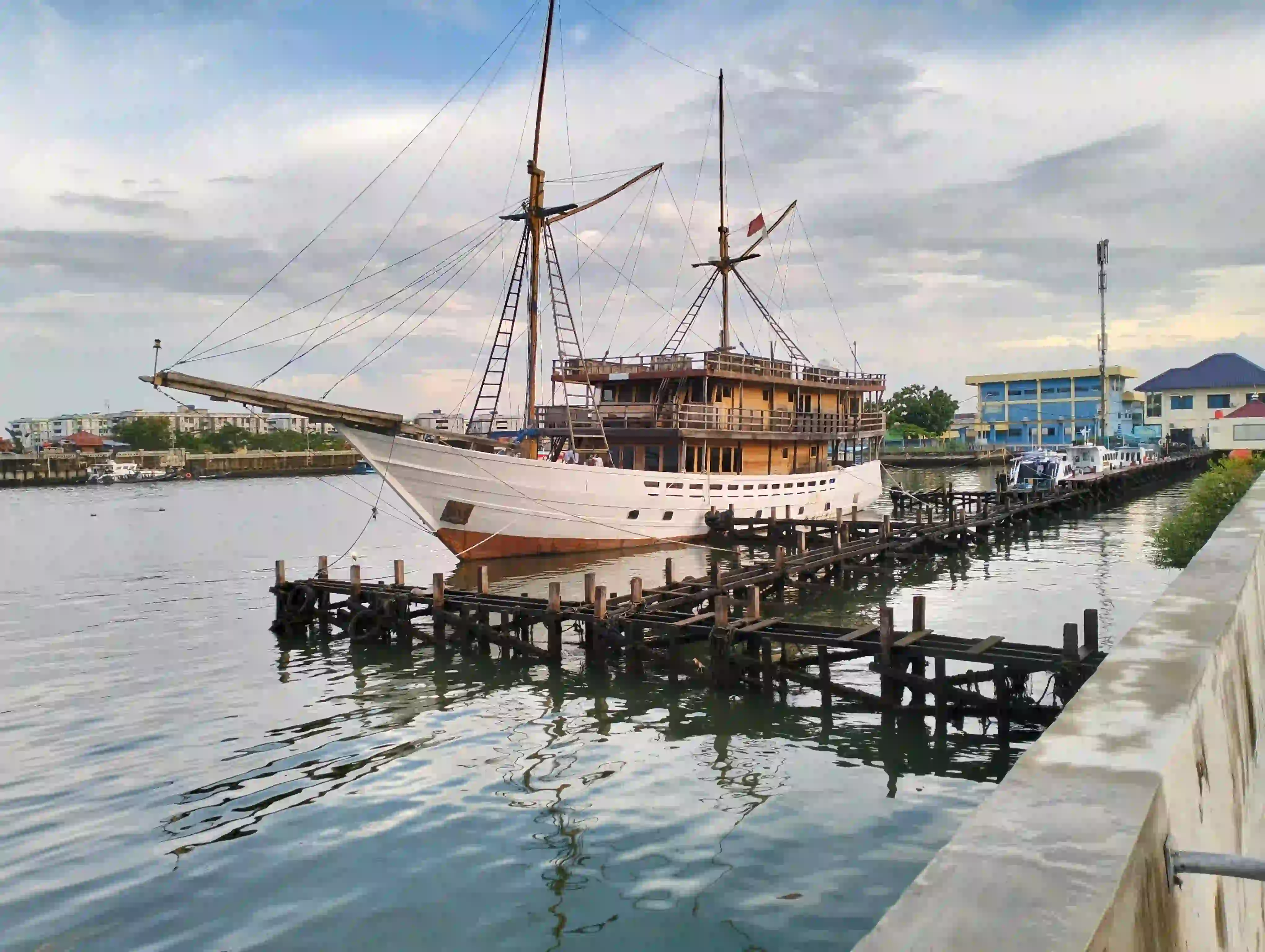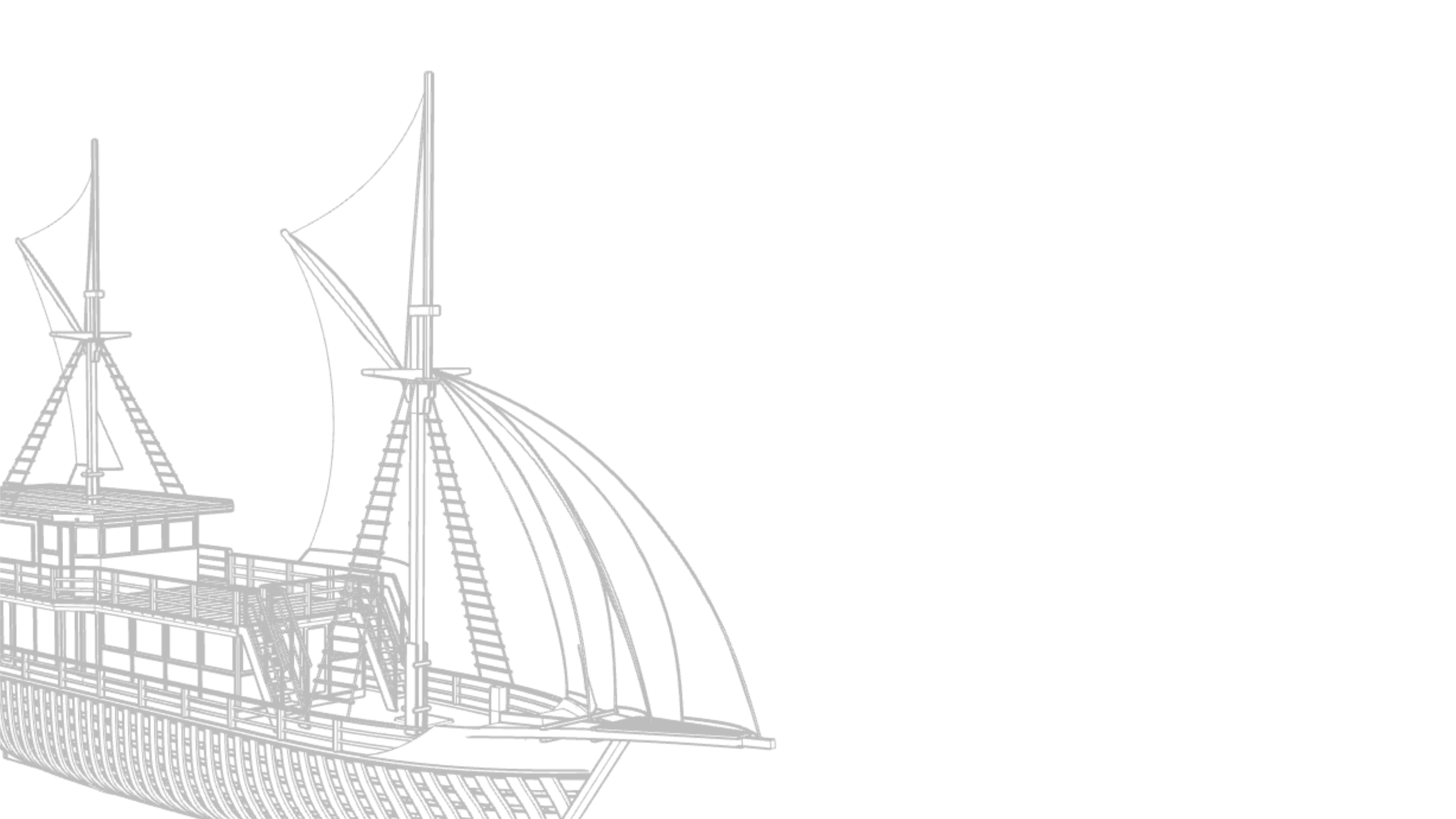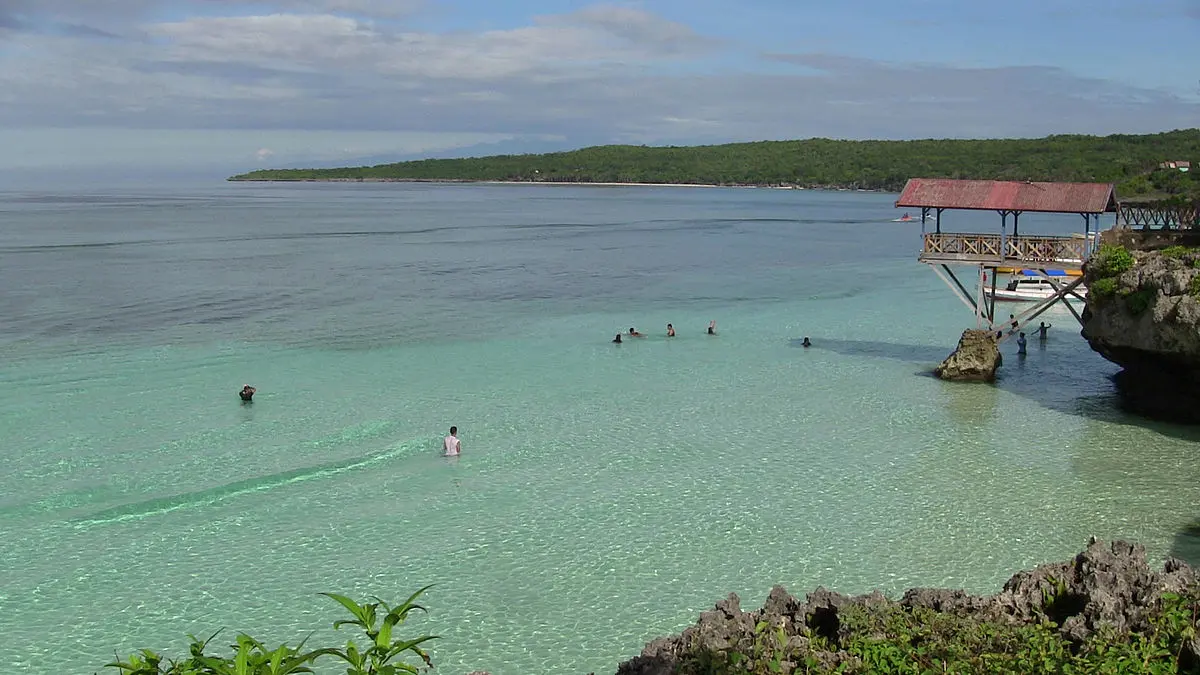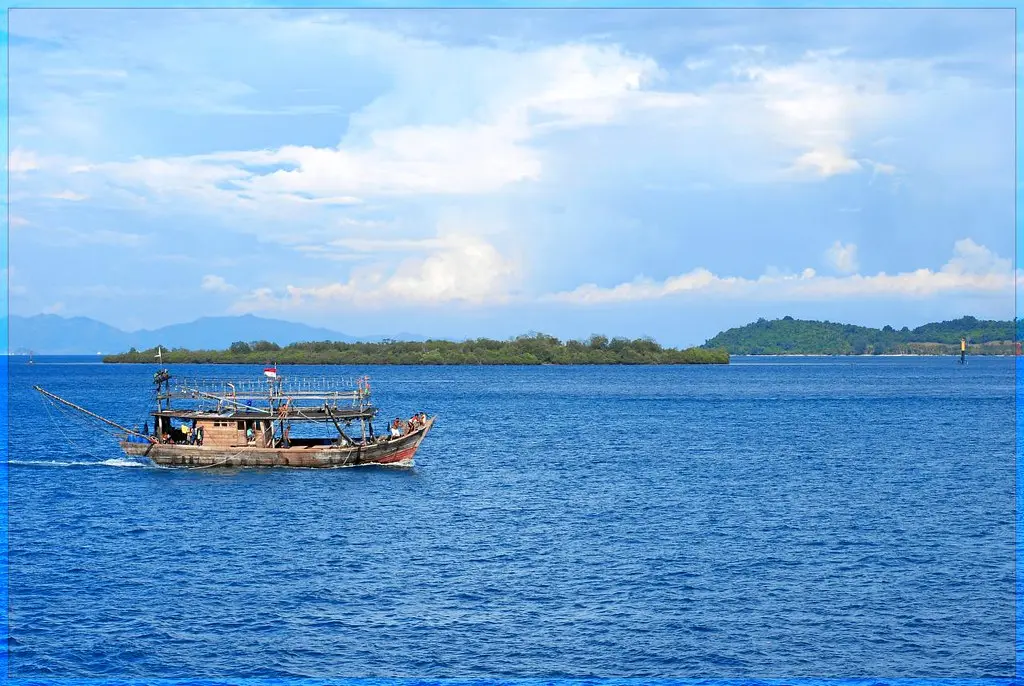The History of Phinisi Boats from Bulukumba: Indonesia’s Timeless Sail

The history of Phinisi boats from Bulukumba spans centuries of craftsmanship, culture, and sea trade. Known as the birthplace of this iconic wooden vessel, Bulukumba—especially the village of Tana Beru—preserves a living tradition now recognized by UNESCO.
For Voyagers, it’s a journey into Indonesia’s soul. Let’s explore how a humble fishing boat became a national symbol.
Read Also: 10 Unique Bajau Tribe Facts About How They Live at Sea
Origins: Bugis-Makassar Seafarers & Early Phinisi
The roots of the Phinisi trace back to the skilled Bugis and Makassar seafarers of South Sulawesi, who mastered the maritime routes of the sprawling Nusantara archipelago.
For centuries, these coastal communities were known not only as sailors but as explorers, traders, and builders—capable of navigating open seas long before modern instruments.
Driven by trade, migration, and diplomacy, these mariners built early wooden boats to carry precious cargo such as spices, timber, textiles, and rice between islands and across the region.
Their vessels needed to be fast, stable, and adaptable—traits that gradually shaped the Phinisi’s defining structure.
Over time, the Bugis and Makassar shipbuilders absorbed external influences from other maritime civilizations:
- Arab dhows inspired the use of triangular (lateen) sails and robust hull shapes.
- Chinese junks introduced the idea of reinforced joints and multiple deck layers.
- Dutch ships brought ideas of stern-mounted rudders and larger cargo capacity.
Through a process of cultural adaptation and innovation, these elements were blended into a uniquely Indonesian form: the Phinisi—a vessel made not from one origin, but from a legacy of interaction across seas.
When was The First Phinisi Built?
While no precise records exist, historians and oral traditions estimate the Phinisi first emerged between the 14th and 17th centuries, evolving from earlier boat designs like the Padewakang and Lepa-Lepa.
These early Phinisi were smaller, often with one mast, and primarily used for regional trading missions.
The rise of the spice trade across the Indonesian archipelago gave these boats global significance—linking Sulawesi to Maluku, Kalimantan, Java, and even ports in Malaysia and the Philippines.
Design Evolution: From Workhorse to Cultural Symbol
Phinisi boats began as modest workhorses of the sea—designed for function above all. Early versions featured narrow hulls, flat open decks, and often outriggers to provide balance.
These made them perfect for navigating the shallow waters of Indonesia’s island coasts, ideal for fishing, short-distance trade, and inter-island travel.
As seafaring demands grew and craftsmanship evolved, so did the Phinisi’s structure and style:
- Two towering masts were introduced, often rigged with large triangular or gaff sails, allowing the boat to harness wind more effectively for long voyages.
- Raised sterns offered better visibility and space for navigation or captain’s quarters.
- Ornate carvings and decorative wooden motifs were added, each with symbolic meaning rooted in local beliefs—many invoking protection, prosperity, or guidance from ancestral spirits.
This transition from a purely functional vessel to an aesthetic and spiritual symbol transformed the Phinisi into a national icon.
Phinisi in Maritime Economy & Trade
Phinisi ships were once the lifeblood of Indonesia’s maritime economy, sailing the seas long before modern shipping routes were mapped.
Their role extended far beyond transportation—they shaped livelihoods, connected cultures, and sustained entire communities.
Here’s how Phinisi influenced trade and economy:
1. Essential Cargo Carriers
For centuries, Phinisi ships transported valuable goods like spices, rice, textiles, and timber across the archipelago, powering both local and regional trade.
2. Economic Backbone of Coastal Communities
Families and clans, especially in South Sulawesi, depended on Phinisi for income and mobility—turning these vessels into floating homes and mobile markets.
3. Symbols of Status and Heritage
Ownership of a Phinisi reflected wealth, skill, and prestige. Many were passed down through generations, with each ship holding stories of survival and success.
4. Island-to-island Connectors
Phinisi bridged remote coastal villages with economic hubs like Java, Borneo, and the Maluku Islands, enabling cultural exchange and food security.
5. Modern Revival Through Heritage Tourism
Although steamships diminished their commercial use, Phinisi were reborn as eco-tourism vessels, offering diving cruises, cultural tours, and luxury sailing experiences—especially in areas like Komodo and Raja Ampat.
Read Also: A Complete History of Indonesia Maritime Timeline and Its Global Legacy
Cultural Significance & Rituals
Phinisi boats are more than just transport—they’re sacred vessels deeply rooted in cultural tradition. Among the Bugis-Makassar communities in South Sulawesi, their construction is guided by ritual, belief, and ancestral respect.
Here’s what makes them culturally significant:
1 Keel-laying Begins with A Blessing
Known as Appa Sulapa, this ceremony includes offerings, sea prayers, and symbolic gestures to invite protection and luck.
2. Builders Follow Strict Taboos and Spiritual Customs
These include selecting wood on auspicious days, abstaining from conflict during construction, and respecting cosmic balance (sulapa eppa philosophy).
3. The Boat is Seen As Having A Soul (nyawa)
It is treated like a living being—mistreatment or disregard for rituals is believed to bring bad fortune at sea.
4. Community and Oral Tradition Guide the Process
Knowledge is passed down through generations, and multiple community roles—from spiritual leaders to master builders—are involved.
Why Are Phinisi Sacred?
Phinisi are not just boats—they’re spiritual vessels woven with ancestral memory and communal identity. From the moment construction begins, the process is guided by rituals, taboos, and deep respect for the sea.
1. Ceremonial Beginnings
Each Phinisi starts with a ritual called appatongang, a traditional keel-laying ceremony where offerings are made to seek blessings from the spirits and the sea. This ensures the boat’s safety, balance, and harmony throughout its life.
2. Spiritual Taboos and Practices
Builders follow a strict code—certain words can’t be spoken, and some actions are forbidden during construction. These taboos are rooted in Bugis-Makassar cosmology, where the boat is seen as a living entity.
3. Symbol of Ancestral Connection
Many boatbuilders believe that a part of the ancestors’ spirit inhabits the vessel. The boat thus carries not just people or goods, but also a legacy of knowledge, belief, and responsibility.
4. Communal and Spiritual Role
Launching a Phinisi isn’t just a technical milestone—it’s a sacred event. Whole communities gather to bless the vessel, offer rice and incense, and release it to the sea with prayers for protection.
Modern Use & Cultural Revival
Today, Phinisi boats sail again—not for trade, but to share culture. From Komodo to Raja Ampat, they now offer eco-cruises and heritage voyages for modern Voyagers. So, how can you experience this living tradition up close?
1. Sustainable Tourism & Storytelling
Tour operators have transformed Phinisi into floating lodges that provide low-impact, locally rooted adventures. Guests sail through marine parks while learning about traditional navigation, boatbuilding, and coastal heritage.
2. Revival of Craftsmanship
Shipyards in Bulukumba and Tana Beru continue to build Phinisi by hand, using traditional methods passed down for generations. This resurgence has attracted artisans, documentarians, and heritage enthusiasts from around the world.
3. Global Recognition
In 2017, UNESCO recognized Phinisi boatbuilding as Intangible Cultural Heritage, affirming its cultural value and encouraging its protection. This recognition not only honors the builders—but also connects modern Voyagers with living tradition.
The history of Phinisi boats from Bulukumba is more than a story—it’s a living legacy. These vessels carry generations of wisdom, identity, and resilience, all carved into wood and sail.
If you’re ready to go beyond the page and into the shipyard, Riara Marine invites you to experience the craft firsthand.
Read Also: Exploring the History of the Phinisi Boat and Its Cultural Legacy
Step Into the Craft at Riara Marine
Want to do more than just read about history? At Riara Marine in Bulukumba, you can walk the decks where tradition lives on. Join a guided Workshop Tour where master builders shape Phinisi boats by hand—just as their ancestors did.
What you'll experience:
- Watch the construction process up close, from keel to mast
- Learn about ancient tools, sacred rituals, and traditional woodwork
- Try your hand at shaping timber or tying classic maritime knots
- Meet the builders who carry Indonesia’s sailing legacy forward
This isn’t just a tour—it’s a doorway into Indonesia’s living maritime heritage.
Book your visit to Riara Marine today and be part of a story still sailing strong.



